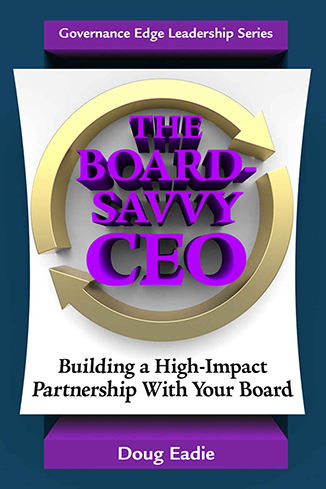 During our discussion of board engagement in strategic innovation in a CEO workshop I conducted recently, four or five participants lamented that critical, well- conceived innovation initiatives that their boards had formally approved ultimately ended up on the shelf. One of the initiatives, for example, involved launching a new joint venture with the local community college to provide workforce training for a new manufacturing facility being constructed. What doomed the initiatives appeared to be insufficient board political and/or financial backing, so we decided to dig into these real-life cases to determine why board engagement hadn’t produced firm commitments.
During our discussion of board engagement in strategic innovation in a CEO workshop I conducted recently, four or five participants lamented that critical, well- conceived innovation initiatives that their boards had formally approved ultimately ended up on the shelf. One of the initiatives, for example, involved launching a new joint venture with the local community college to provide workforce training for a new manufacturing facility being constructed. What doomed the initiatives appeared to be insufficient board political and/or financial backing, so we decided to dig into these real-life cases to determine why board engagement hadn’t produced firm commitments.
Our conclusion after an hour of robust discussion? In a nutshell, we agreed that these initiatives had fallen victim to what I call the “Faux Engagement Syndrome.” When the lamenting CEOs described how they’d engaged their board members in the process of coming up with concrete innovation initiatives, without exception they reported holding special board work sessions at which executive team members presented fully fleshed out initiatives. Their very thorough presentations covered the needs/demands being addressed, the goals of the initiatives, the strategies for carrying out the initiatives, and the time and money required. Although the CEOs testified that board members were actively engaged in asking insightful questions and that discussion was robust, it was crystal clear that these CEOs had turned their board members into passive-reactive audiences for finished staff work: a classic case of faux engagement that failed to leverage their boards as a precious asset in the innovation planning process
We spent much of the remainder of the workshop examining in detail how to leverage the board as a powerful innovation asset, fully capitalizing on board members’ knowledge, skills, experience, connections, and perspectives and fostering the kind of ownership that fuels commitment. The key to effective leverage on the innovation front, we all agreed, was early engagement in the innovation planning process well before innovation initiatives were fully developed. Several participants had learned that a well-designed and facilitated board-CEO-executive team retreat kicking off the innovation planning process was a highly effective vehicle for serious – not faux – engagement. We discussed employing retreat breakout groups to update the organization’s “strategic framework” for innovation – its vision and values – to brainstorm innovation opportunities, assess organizational strengths and weakness, and identify potential innovation initiatives.
We also spent a few minutes discussing how a standing board planning committee has proved to be a highly effective vehicle for following through on a kick-off retreat: refining the values and vision statements, assessing innovation opportunities, overseeing the process of developing initiatives, reviewing initiatives, and recommending them to the board for adoption.
Serious – not faux – engagement is key to leveraging your board as an asset in generating sorely needed innovation in our changing, challenging world.





